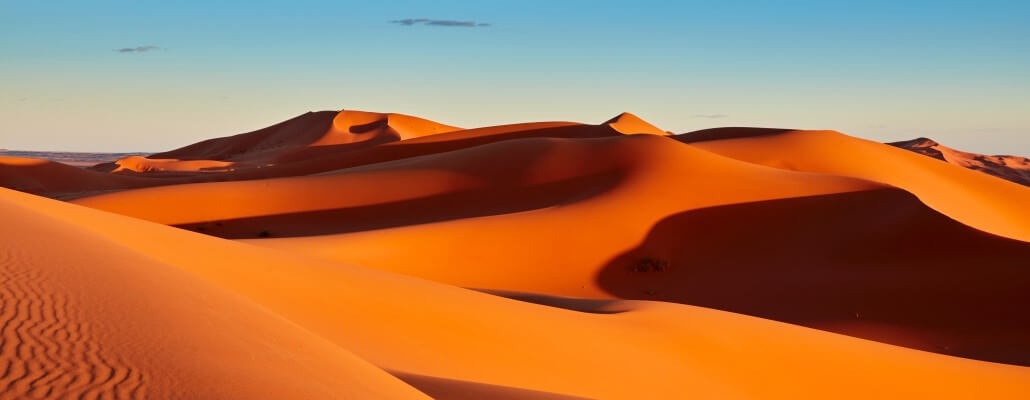The movies might depict the deserts to be wide expanses of sand, with the occasional tumbleweed to add a sense of drama, but in reality, they’re much more exciting than that! While the general norm is to associate heat, dryness, and isolation with deserts, there’s more to deserts than meets the eye, for instance the fact that only 20% of the world’s deserts are covered in sand!
Let’s demystify these common misconceptions and discover some lesser-known facts about deserts!
Interesting & Fun Desert Facts
1. The word desert means to leave a place causing it to appear empty, which is exactly how many believe deserts to be.
Because a desert hardly gets any rain at all, less than 400ml, harsh conditions persist making it tricky to survive.
2. Deserts are hot in the day and freezing cold at night.
This is due to the low humidity. There is no blanket to help insulate the ground which is why it can get very hot during the day. The ground is unable to hold this heat overnight, causing some deserts to reach temperatures of over 100 degrees F during the day and below 32 degrees F during the night.
3. Deserts don’t seem like the best places to live in as they seem quite bare and desolate.
However, one billion of the seven billion people in the world live in desert areas! People, as well as animals, have adapted to the harsh climatic conditions that prevail.
4. The desert has a vibrant animal life, most of which are nocturnal.
They hide out in burrows during the day and come out at night when the temperature is lower. In the Sonoran desert alone, over 200 rattlesnakes can live in a single square mile!
5. Not all deserts follow the pattern of being hot during the day and cold at night.
The world’s largest cold desert is Antarctica, located in the South Pole, and covers roughly 5 million square miles!
6. There is no rainfall in Antarctica, only snow.
What makes it stand out is the fact that the snow never evaporates resulting in the formation of gigantic ice sheets!
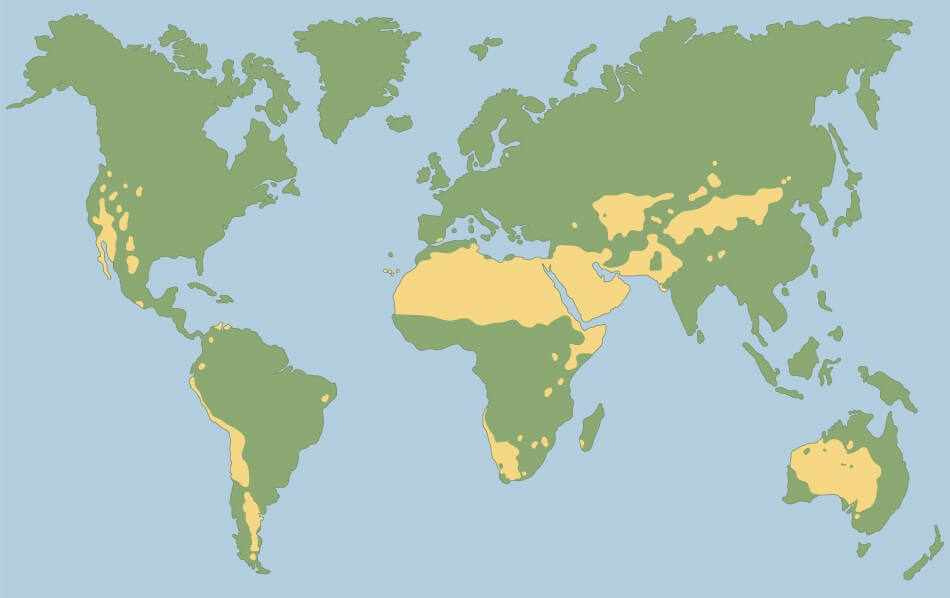
7. It is said that 33% of the world’s land surface is desert.
Europe is the only continent with no large deserts.
8. The plants in the desert have adapted to the harsh climate and some of them can survive without water for years.
Certain plants grow long roots, allowing them to get water from deep down in the ground.
9. Cacti store water, and in some instances, this allows them to survive for more than a hundred years.
The oldest cactus in the world was known as “Old Granddaddy”. It was over 40 feet tall and had 52 arms, and was estimated to be 300 years old when it started to perish in the 1990s.
10. Deserts don’t always form naturally.
Sometimes they form because of the way humans treat the land. Animals that graze in the same spots cause the plant life to disappear completely and at times, their hooves can damage the soil.
11. In the desert, the wind grinds pebbles and sand into dust.
A windstorm can gather up this dust, creating a huge dust storm. It is said that dust storms can be over one mile high, and so thick with dust that you cannot breathe!
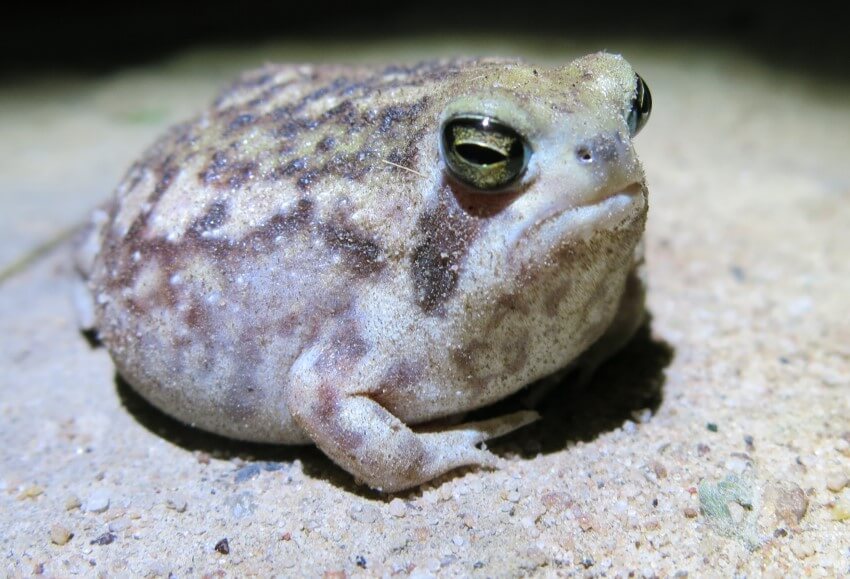
12. Rain can occur in the desert, but they are a rarity.
Some parts of the Atacama Desert, have witnessed the absence of rain for 401 years!
13. When it rains in a desert a lot of water reaches the ground in a short span of time.
Some rain passes into the dry sand, though some of it might form a temporary river.
14. Hot deserts are susceptible to mirages, or fata morgana.
A mirage is essentially a trick of light which makes you think there is a pool of water in the desert, when in reality, there isn’t!
15. There are areas in the Arctic and Antarctica that have no ice at all.
These are referred to as polar deserts.
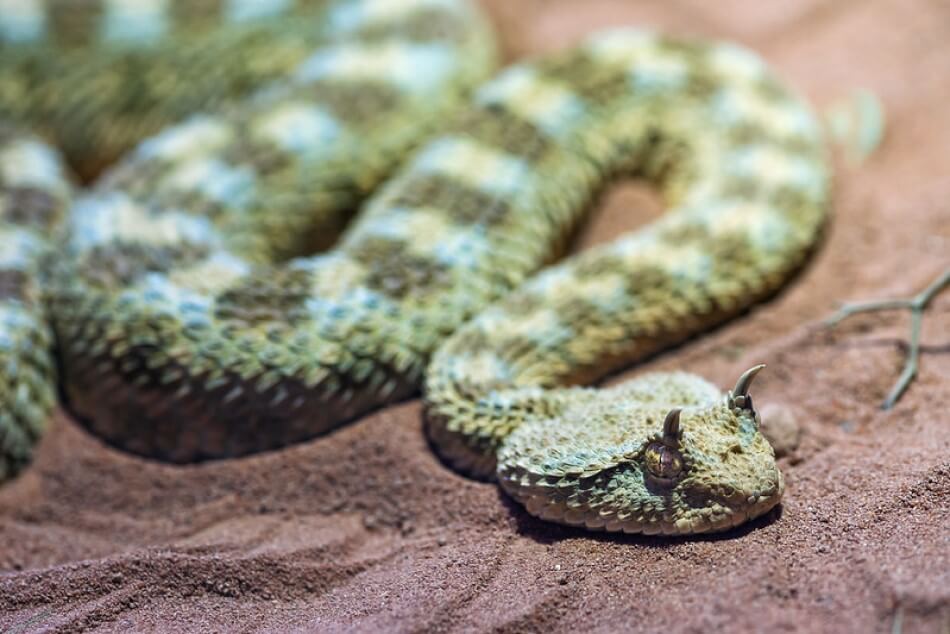
16. The Gobi desert in the north of China and the south of Mongolia is growing at a rapid rate.
This is mainly because of desertification. Desertification occurs when fertile lands where crops can grow are turned into desert areas. This is caused by the cutting down of forests, droughts, climate changes and other environmental causes.
17. The primary inhabitants of the desert are animals such as lizards, rattlesnakes, and coyotes.
These animals are nocturnal, meaning that they come out only at night.
18. The camel is known as the ship of the desert.
This is mainly because it has body fat which is stored in their hump that locks heat in, keeping them warm during the cold nights.
19. The overall size of the deserts is increasing every year.
Around 46,000 square miles of land is turned into desert every single year!
20. The largest hot desert in the world is the Sahara.
It covers an area of 9.4 square kilometres and spans over 12 North African countries.
Types of Deserts
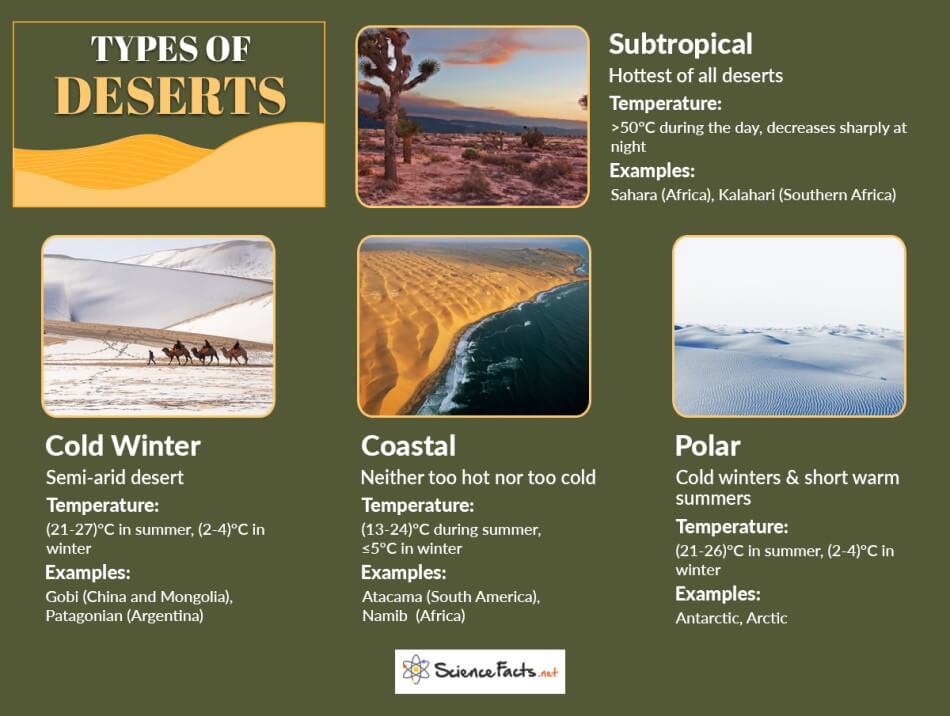
Deserts cover around 20% of the Earth’s surface and are amongst the most hostile environments on the planet. Deserts are formed in areas which receive large amounts of sunshine or where various features have limited rainfall.
Scientists have identified four basic types of desert:
- Subtropical deserts are extremely hot and dry in the summer but cooler in the winter (while still staying dry). When rain does fall it is usually in short bursts, while conditions are so hot that it often evaporates before having a chance to hit the ground. The soil in these deserts is usually sandy or coarse and rocky. Temperatures in these deserts vary wildly with 100° plus days often followed by freezing nights.
- Semi-arid deserts have long, dry summers followed by cold winters with small amounts of rain or snowfall. Cooler temperatures at night allow for more moisture to penetrate the soil allowing for greater plant growth. The soil in these deserts ranges from fine sand to loose rock or gravel.
- Coastal deserts form in cool to warm regions along coasts. These deserts have a cool winter and long, warm summers. Coastal deserts are always located on the west coasts of continents between 20° and 30° latitude, where winds blow in an easterly direction and prevent any moisture from moving far inland. The soil in these deserts is usually very fine
- Polar deserts have formed in both the Arctic and Antarctic where they combine low temperatures with low snow and rainfall. Polar deserts also feature long periods of complete darkness lasting several months and other times when the “daytime” lasts just a few hours. Due to strong winds, often blowing at over 100 mph, large areas are often completely devoid of snow or liquid water.
How are Deserts Formed?
The formation of a desert is usually due to a number of natural processes (although human activities can also be responsible). The most common of these processes are:
- Equatorial Air – The intensity of the sun is the strongest at the Earth’s equator. This energy heats huge amounts of air which then rises and descends, evaporating large amounts of water from the surface and creating hot, dry climates.
- Rain Shadows – As moist air passes over mountain ranges it expands and cools, which results in it losing most of its moisture. When the air descends it warms up and causes high evaporation rates while dumping only small amounts of moisture.
- Location & Distance – Most of the Earth’s atmospheric moisture is drawn from the oceans. Regions which are far from this source often receive little moisture as a result.
- Cold Ocean Currents – The oceans are the major means by which energy is transported around the planet. Cold ocean currents cool the air above them which then rises and warms when it moves over land causing increased evaporation. This water then falls as rain further inland creating a narrow strip of desert between the coast and these wetter areas.
Desert landscapes are shaped by both erosion and weathering which break down rocks into smaller particles. Sand which is blown by the wind can scour the surface of exposed rocks creating dramatic features. Sudden storms can also lead to flash flooding which can wash away large amounts of material as there is often little vegetation to hold the soil down. The large temperature variations between night and day can cause rocks to weaken and crack as they expand and contract with the heat. Moisture can also penetrate cracks, freeze, and expand leading to further breaking. If salt water comes into contact with rocks it can leave behind salt crystals which can also break apart rock as they expand.
Desert Landforms
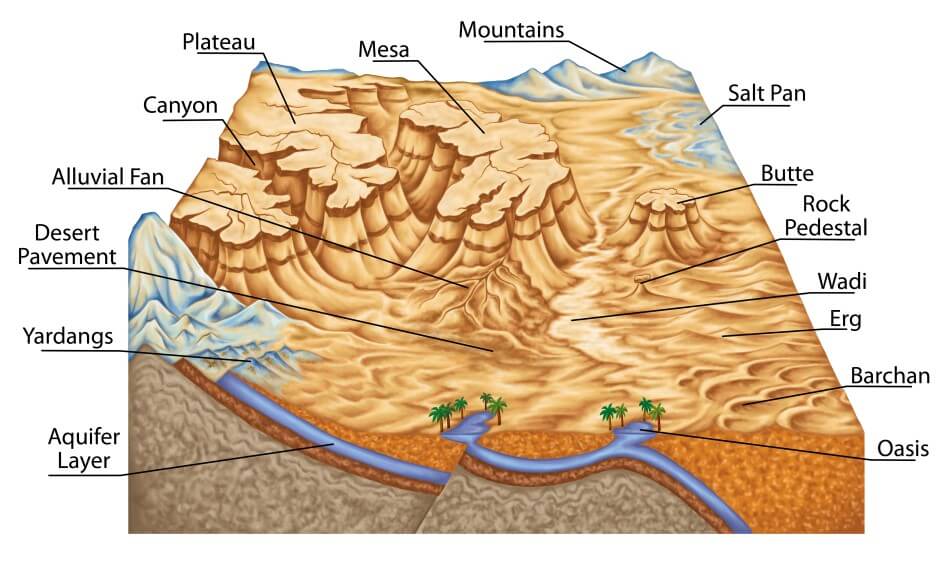
Deserts don’t just consist of dunes, in fact there are many different types of interesting desert landforms! They are all formed in different ways, and vary depending on things like weather conditions and the softness or hardness of the rock.
Inselbergs
Inselbergs, or “island mountains”, are bodies of rock resistant to erosion that are surrounded by softer rock. Over time this softer rock erodes away leaving behind the harder rock.
Arches
Arches are formed when soft rock is surrounded by harder rock. Over along period of time the wind and rain work to break up and transport the softer rock, creating a hole.
Salt Pans
Salt Pans are formed when water collects in a single location but then evaporates, leaving behind a layer of minerals which build up into thick landforms over many years.
Pedestal Rocks
Pedestal Rocks are formed as abrasion by wind-born grains of sand (which typically occur less than 3 feet from the ground) causes the bases of outcrops to erode faster than their tops.
Buttes
Buttes are isolated hills whose heights are generally larger than their width. Composed of harder rock, they show the past ground level as the softer rock surrounding them erodes away.
Mesas
Mesas are areas of land with steep sides and flat tops formed through erosion and tectonic uplift. Over time these can almost completely erode away leaving behind buttes.
Wadis
Wadis are dry riverbeds which only experience water during times of heavy rain fall. The beds often have large amounts of deposition as the water quickly evaporates away.
Alluvial Fans
Alluvial Fans occur where periodic flash floods deposit materials from areas of higher elevation such as buttes or mesas onto flatter desert plains.
Desert Dunes
By far the most famous desert features are sand dunes – large accumulations of sand which form hills, ridges, or other structures. Scientists have identified four major types of dunes:
Crescentic Dunes
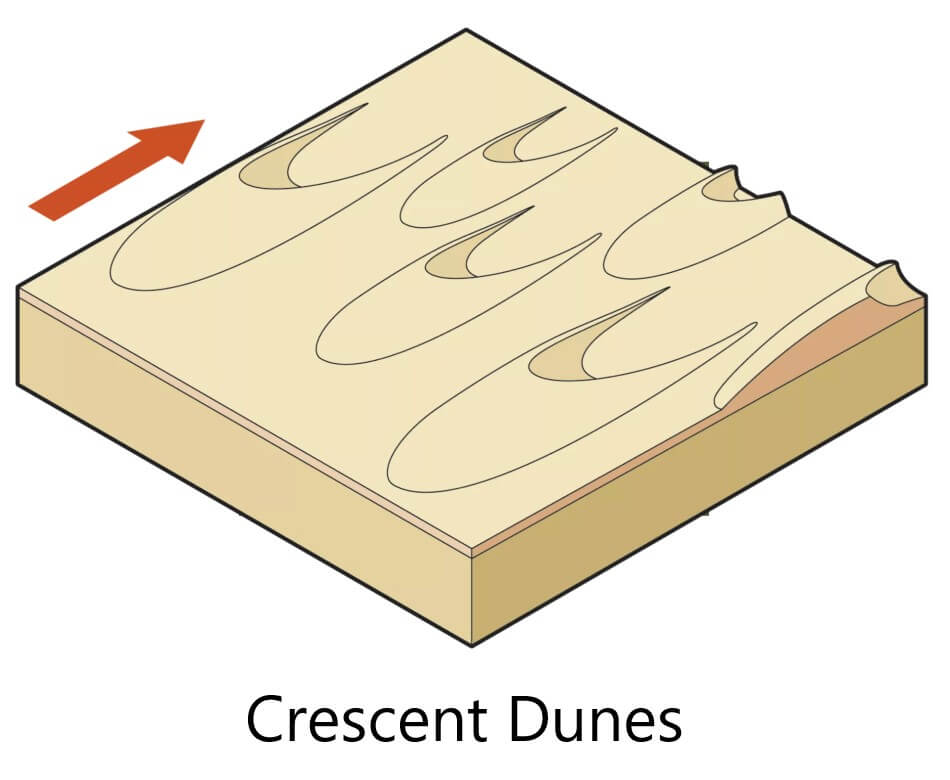
Crescentic dunes are crescent-shaped mounds which are usually wider than their lengths. They are formed when the wind blows from one direction and, as a result, move over the desert surface faster than any other type of dune – up to 100 meters per year! They can be identified from the steep slip face which forms on their concave side.
Linear Dunes
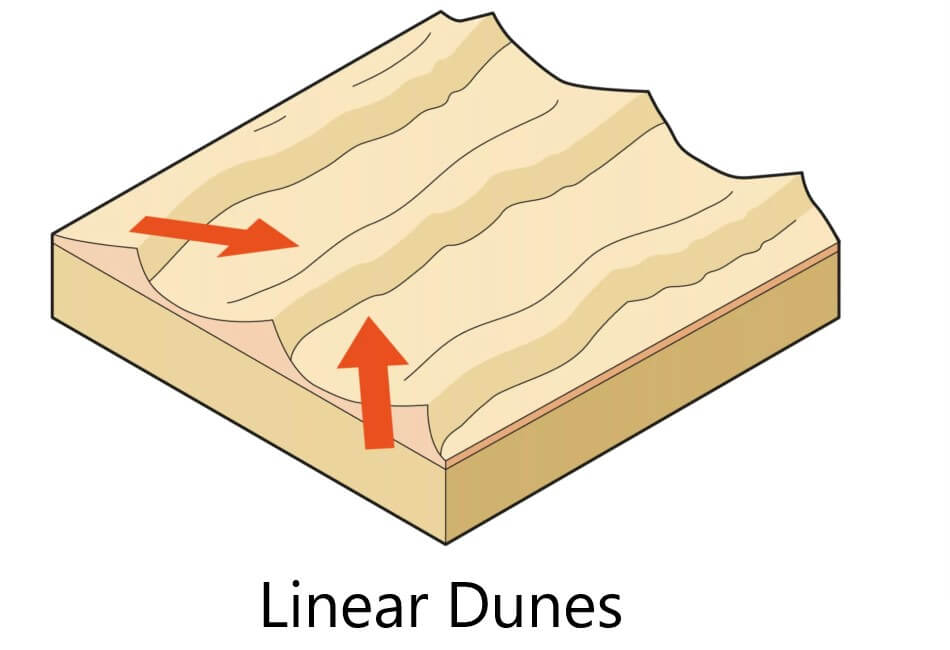
Linear dunes are straight, or slightly curving, sand ridges which are much longer than they are wide. These dunes can be over 100 miles long in some cases and often form parallel sets of ridges separated by flatter areas of sand or gravel. They form in environments in which winds can blow in several directions.
Star Dunes
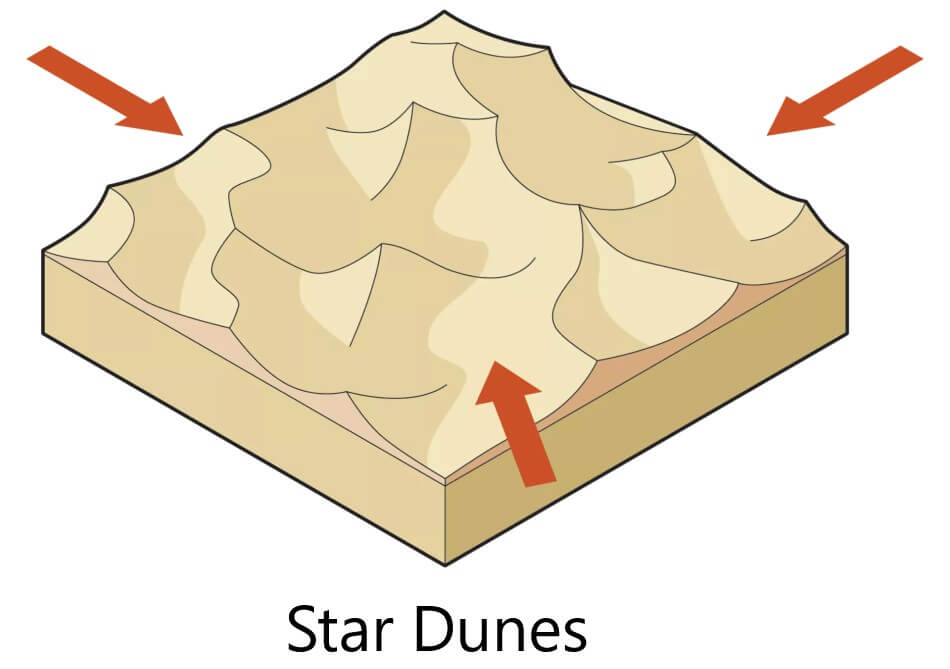
Star dunes are pyramid-shaped mounds of sand with slip faces on three or more arms which extend from a high center. These are formed in areas with winds which blow from multiple directions and grow upwards rather than horizontally. In some places these dunes can be up to 500 meters high.
Parabolic Dunes
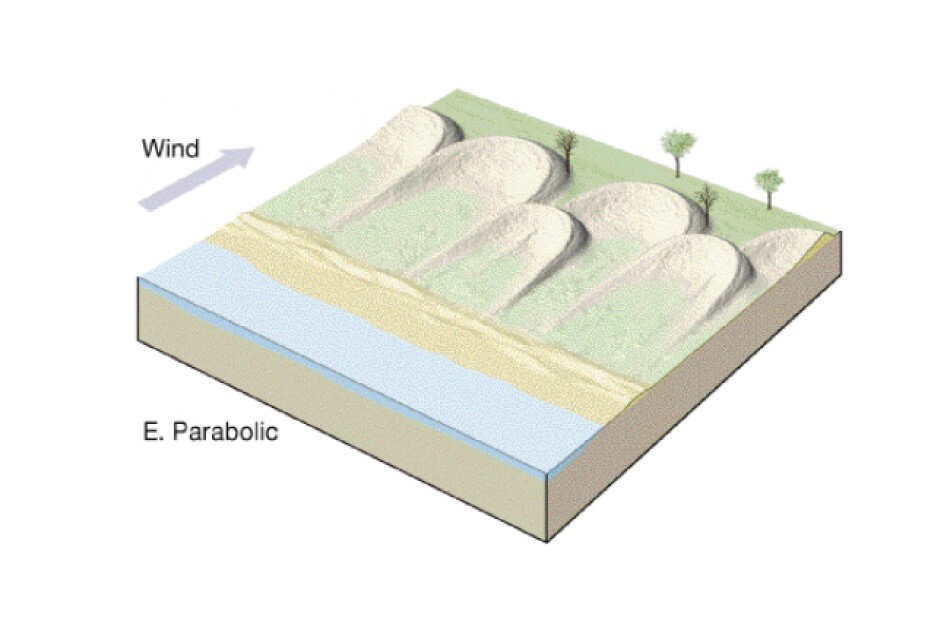
Parabolic dunes are formed where vegetation begins growing at the ends of a sand dune, holding them in place while the center of the dune continues to move forwards. These dunes can often be found in coastal deserts where the wind supply is from a single direction. Their crests also point upwind.
The actions of the wind can cause dunes to separate and merge. When crescentic dunes merge and form nearly straight ridges, they are known as transverse dunes. When they accumulate but retain their crescent shape they are known as Barchanoid dunes. One other type of dune, known as a dome dune, can also form although these are often mistaken for hills. They are irregular in shape and often have plant cover which helps to keep them stable.
Desert Climate
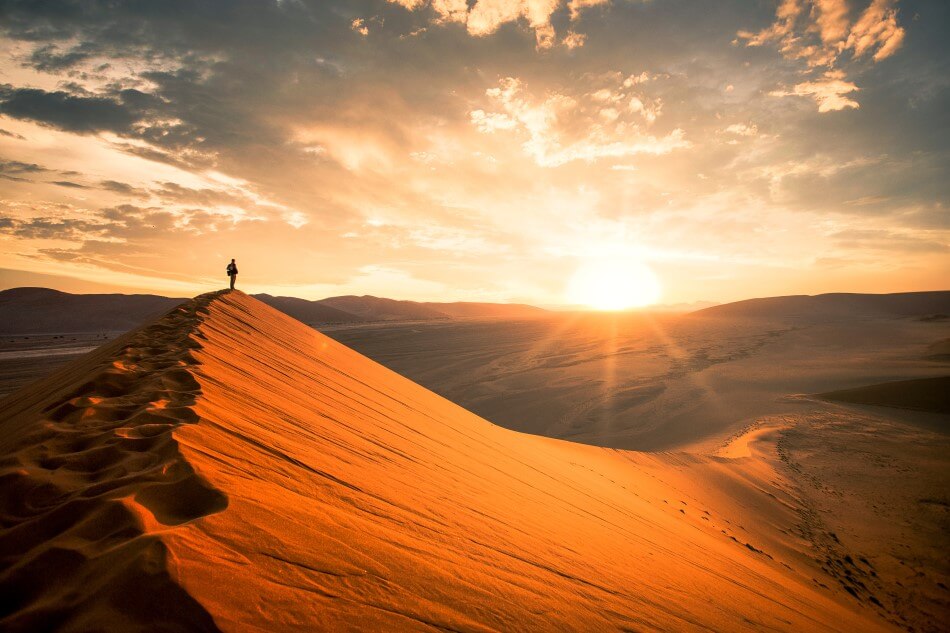
The average amount of rainfall deserts receive is usually less than 10 inches per year, compared to a global average of 28 inches. In some deserts this figure is even lower, with parts of the Sahara and Atacama deserts receiving less than one millimeter of rain per year on average! Even when rain does fall, the hot environments of desert areas result in quick evaporation so that most of the water cannot be used by either plants or animals.
In some deserts which experience cold winters, most of their water comes from melting snows in the springtime. This leads to a short potential growing season. Some coastal deserts receive moisture from fogs which are blown in from the sea and can provide up to 5 inches of water per year. In deserts which experience cold nights and still have some moisture in the air, dew can form on rocks and plants. Other deserts have large underground stores of water which can be accessed by long-rooted plants or drilling. In some areas these water sources appear close to, or at, the surface where they can support large numbers of plants and animals. We call these areas an Oasis, the plural being Oases.
Desert Animals

Most animal life in deserts is nocturnal, meaning that it is active during times of darkness. During the daytime many animals shelter from the heat by making their homes underground. By taking shelter they also avoid losing large amounts of water. At night time some species gain water from the atmosphere through dew or fog which they trap on their bodies. While some animals have adapted to desert life by changing their behavior, others have developed bodies which allow them to cope with the extreme heat and lack of water. Reptiles, such as snakes and lizards, have skins which resist losing moisture. Snakes can also dig burrows while lizards rest on tip toes to escape the heat of the sand. Scorpions have also developed hard exoskeletons which help them to preserve moisture.
Perhaps the most famous desert animals are camels. Their thick, woolly fur helps to slow down heating, allowing them to tolerate high temperatures. They preserve water by producing concentrated urine and dung, and they are able to lose up to 25 gallons of water from their bodies without ill effect. The fat stored in the camel’s hump also allows it to survive for up to 2 weeks without food!
Deserts are also home to many species of birds which survive by hunting other creatures or by feasting on the bodies of animals which have died. Some of these species have developed extremely strong stomach acids, allowing them to digest meat from animals which may have died weeks or months ago which would otherwise kill them.
Desert Plants
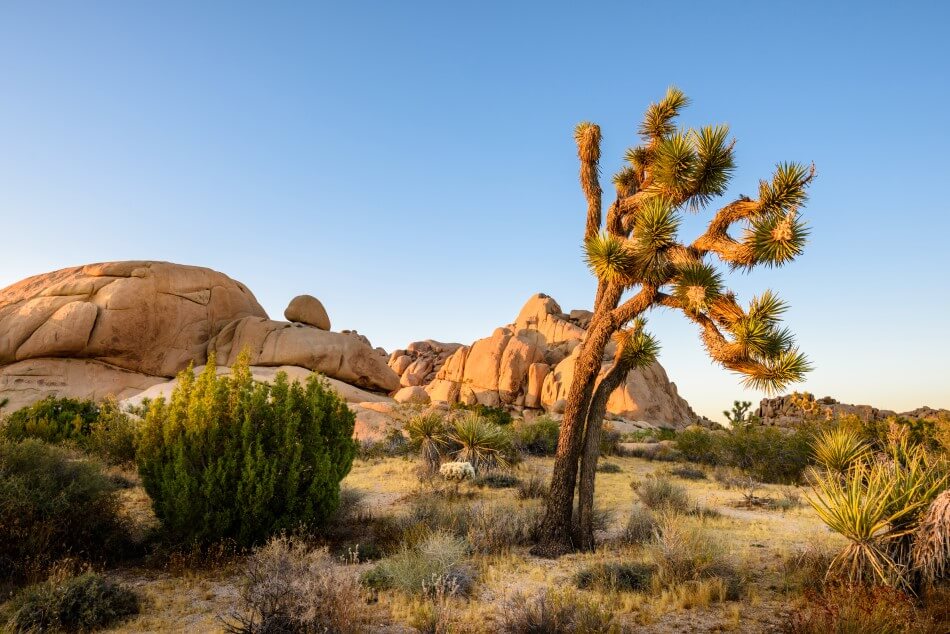
Desert plants are divided into two main types. Ephemeral annuals are plants which survive dry periods as seeds, which can stay dormant for many years if necessary, before rainfall causes them to germinate. Perennials, on the other hand, are plants which have found ways to cope with long periods of water scarcity.
Annual plants can grow, flower, and seed in as little as 2 weeks when conditions are right. Their flowers are usually very large and bright as a way to attract pollinating insects and birds.
Perennial plants have developed a large variety of strategies to cope with dry desert conditions. Some have very long roots which stretch deep into the Earth to tap underground water sources. Other plants, especially cacti and succulents, have evolved the ability to store large amounts of water in their tissues. Their leaves have also often been reduced to small spikes which limit transpiration while at the same time providing a defense against grazing animals. In several deserts plants have also developed thick waxy skins which also prevent water loss. Others have coatings which allow them to trap moisture from the air. The flowers of cacti and succulents are usually large and colorful to attract not only bird and insects, but also bats.
Humans & Deserts
For thousands of years humans have been extracting large amounts of minerals from deserts. Sometimes these minerals are deposited all over the surface which gives deserts unique colors. At other times these minerals can be found in concentrated deposits due to the effects of evaporation, which creates mineral-rich dry lake beds. Among the most important minerals found in deserts are sodium nitrate (used to make explosives and fertilizer), copper, iron, and uranium.
Many of the world’s deserts were, long ago, the sites of shallow seas. When the micro-organisms living in these seas died they sank to the bottom and were covered with sediments. Over millions of years the remains of these creatures were transformed into huge deposits of oil and natural gas. Today major oil fields can be found in the deserts of Saudi Arabia and parts of South America.
Despite the lack of water, humans have also been growing crops in desert environments for thousands of years. Desert farming requires extensive irrigation in the form of wells, canals, and reservoirs to collect, move, and store water. Plants are also fertilized using waste or animal manures. The most extensive example of desert farming is the Imperial Valley in California which has just 3 inches of rainfall each year. Water is transported to the valley from the Colorado River via the All-American Canal. While the valley is now very productive, growing a huge percentage of America’s fruits and vegetables, this has come at the cost of causing huge damage to the Colorado River’s ecosystem.
In recent years deserts have also become the sites for the collection of solar energy due to their low amounts of cloud cover. Large assemblies of mirrors and solar collectors have been constructed in the deserts of the American southwest which provide over 350 megawatts of power. It has been estimated that just 10% of the Sahara Desert’s area covered with solar panels could provide all of Earth’s power needs although it would cost over $500 billion to complete such a plan.
Desert FAQs
How hot can a desert get?
Death Valley currently holds the record for the highest air temperature every recorded. In 1913, it reached 56.7 degrees Celsius (134 Fahrenheit).
What is the largest desert?
The Antarctica is the largest desert in the world. While the Sahara is the largest ‘traditional’ desert, a desert is somewhere that receives less than 10inches of rainfall annual, which is why the Antarctica is considered one. The Antarctica is twice the size of the Sahara Desert.
What animals live in the desert?
The deserts are home to all sorts of wildlife, such as lizards, toads, jackrabbits, camels, snakes, spiders and more. A lot of desert wildlife is nocturnal, hiding from the blistering heat during the day.
How much of the Earth is desert?
Deserts cover nearly 21 million square miles of our planet, which is around 33%.
What is a polar desert?
A polar desert is a type of cold desert, with low temperatures of less than 10 degrees Celsius, and less than 250mm of rainfall annually. There are over 5 million square kilometres of polar desert on Earth.
Sources
- https://www.whatarethe7continents.com/40-interesting-facts-desert/
- https://easyscienceforkids.com/all-about-deserts/
- https://www.dkfindout.com/us/earth/deserts/where-are-deserts-found/
- https://www.coolkidfacts.com/desert-facts-for-kids/
- https://www.ducksters.com/science/ecosystems/desert_biome.php
- https://kids.kiddle.co/Desert#Interesting_facts
